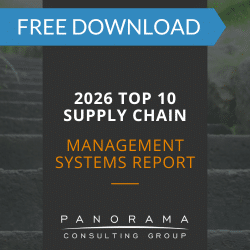When organizations implement new ERP systems, they often think that the biggest change is in the software that employees will be using. Sure, they usually understand that the change will be fairly significant, but they also usually think that some end-user training prior to go-live will resolve most of those concerns. However, it is important to point out that training addresses a relatively minor portion of the vast changes that employees see (and experience) following most ERP implementations.
The degree of organizational change is broad: business processes, job roles and responsibilities, workflows, reporting and transactional processes are just a few of the major changes employees need to adapt to, which underscores the need for an effective organizational change management program. However, the largest change is perhaps a more philosophical and less tangible one: employees must evolve from being hunter-gatherers to true decision makers.
In other words, many employees probably spend a great deal of their time searching for information. Mountains of paper reports, Excel spreadsheets, and even Access databases (for the truly sophisticated) are a normal part of the routine for many 21st century employees. And since these tools are likely all fragmented into silos and aren’t talking to one another, there is likely a great deal of redundant effort trying to manage and find any needed information. No wonder staff members spend a lot less time making sense of and analyzing the data than they could and should be — they’re too busy trying to track it down.
But after organizations implement new ERP software, employees typically have access to a single repository for operational information not only in their own worlds, but also for departments and functions that they perhaps had very little visibility to them before. This transparency is generally a good thing in the long run, but it can be overwhelming to employees if they don’t understand what to do with all of this newfound organizational knowledge. So end-user training that is focused simply on software transactional training isn’t enough. Even if they understand how to use the software the way the ERP software vendors described it, it is arguably more important they understand how to deal with the mountains of data and information that they are about to have access to.
So if end-user training isn’t enough, then how do we ensure that this mindshift occurs? That’s where an effective organizational change management program comes into play. Software training may be the most obvious component of managing organizational change, but it is quite frankly not as critical as constant employee communications, process gap analysis, organizational impact assessments, and a host of other organizational change management initiatives. Only by dedicating time, money, and resources to these activities will your organization be able to realize the full potential business benefits of your new ERP software.
Click through to learn more about our organizational change management services and how they might benefit your company.













